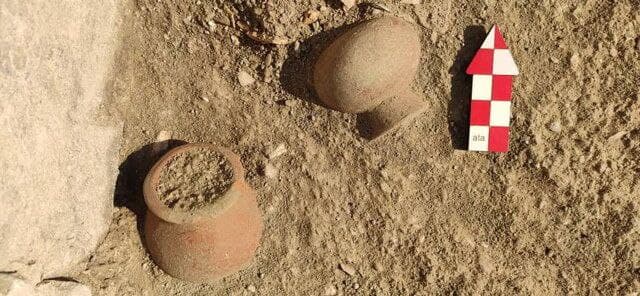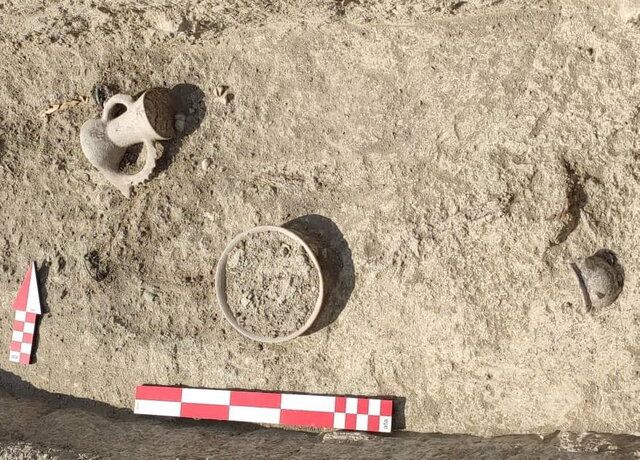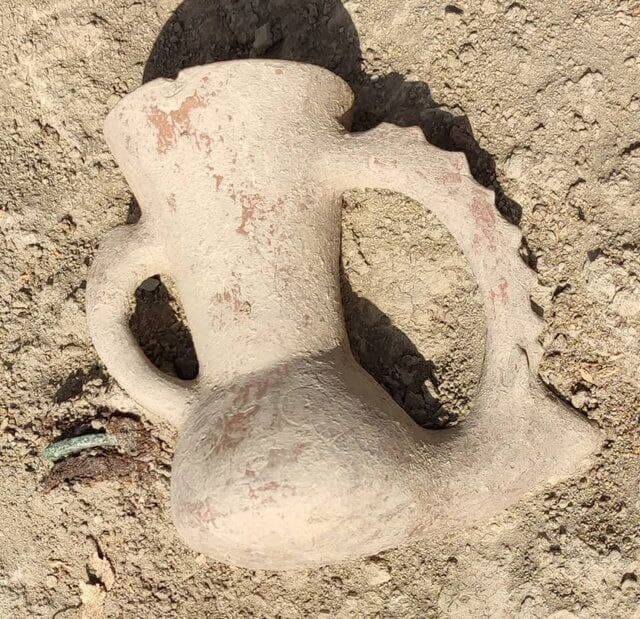Ata Hassanpour, the head of the archeological team based in Mersin Chal Cemetery in Semnan’s Mahdishahr County stated that so far they have succeeded in opening five graves, adding that the discovered clay rhyton belongs to 2,200 years ago.
He also noted that to date, three trenches measuring 10 by 10 and with an area of 300 square meters have been excavated in this cemetery.

“In these graves, there are a lot of items that are buried with the deceased, mostly magnificent objects. For example, in a tomb belonging to a lady, along with luxurious objects such as bracelets, anklets, bangles, and all kinds of pottery in various shapes, a bronze ring with the shape of a winged lion was discovered which is unique in its kind.”

He went on to say that the objects discovered in Mersin cemetery mostly belong to the Parthian era covering the period from the Achaemenid to the Parthian period.
